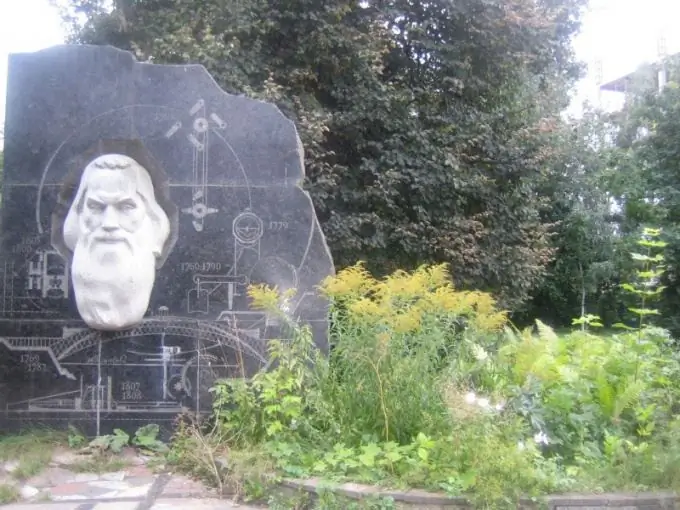- Author Antonio Harrison [email protected].
- Public 2023-12-16 07:44.
- Last modified 2025-01-22 21:44.
The fate of outstanding geniuses, including inventors, was often quite difficult. Many of them, despite the importance of their discoveries, died in poverty. Unfortunately, this fate was not spared by the great Russian watchmaker Ivan Petrovich Kulibin.

Ivan Kulibin was born in the village of Podnovye, which belonged to the Nizhny Novgorod district, on April 21, 1735. His father was a small merchant and loved his son very much. From childhood, little Ivan began to show interest in various mechanisms, mainly watches. The little mechanic's room was like a workshop.
The boy grew up, his hobby became more and more serious. Kulibin Jr. repaired millstones and other machines without any problems, without ceasing to pay attention to clock mechanisms. The father was very proud of his son, the news of the talented youth spread far beyond their village. Soon, talk about the young mechanic spread throughout Nizhny Novgorod, and thanks to the efforts of traveling merchants and beyond.
In 1769, Ivan Kulibin presented his own hand-made watch to the Empress Catherine II herself. It was a small pocket watch with a striking sound and a musical apparatus that played several melodies. Every hour the door was thrown open in them and from behind it appeared dancing little gold and silver men. The Empress really liked this gift, and the provincial self-taught master was appointed head of a workshop at the St. Petersburg Academy of Sciences. Now this watch is kept in the Hermitage.
Under the leadership of Kulibin, new inventions began to spread, which greatly surprised his contemporaries: nautical compasses and precise scales, achromatic telescopes, even an achromatic microscope was invented. By a special order of Catherine II, Ivan Petrovich designed an elevator for her, but he pleased Potemkin with the miracles of pyrotechnics, which they could envy even now.
In 1772, Kulibin made projects for an arched bridge across the Neva and for the first time proved the possibility of making models of bridge structures. Thus, he solved the problem of large ships passing under them.
Ivan Petrovich Kulibin invented and experienced a lot of things over the years of his life. There were river vessels with water-powered engines, able to move against the current, and searchlights with reflectors from mirrors, and mechanical carriages with pedals, and an optical telegraph, and a mechanical prosthetic leg and much more.
But, thanks to innate modesty, Kulibin did not demand any large fees for his inventions, he was always content with what was given. With the change of the ruler, there were also some personnel changes, Ivan Petrovich, who gave more than thirty years of his life to the St. Petersburg Academy, was forced to return to Nizhny Novgorod. Most of his inventions, the possibility of the existence of which was confirmed by our time, were not realized during the life of a talented mechanic.
Kulibin died in poverty at the age of 83. To adequately organize his funeral, the relatives had to sell one of Ivan Petrovich's inventions, namely, his favorite wall clock.






